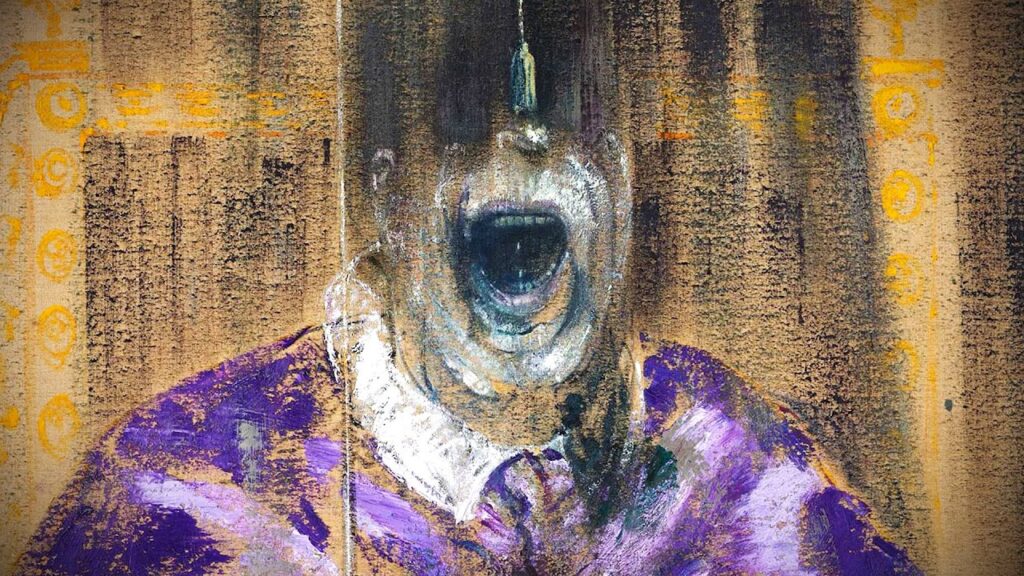
"Men­tion Fran­cis Bacon, and you some­times have to clar­i­fy which one you mean: the twen­ti­eth-cen­tu­ry painter, or the sev­en­teenth-cen­tu­ry philoso­pher? Despite how much time sep­a­rat­ed their lives, the two men aren't with­out their con­nec­tions. One may actu­al­ly have been a descen­dant of the oth­er, if you cred­it the artist's father's claim of rela­tion to the Eliz­a­bethan intel­lec­tu­al's half-broth­er."
"As Hochela­ga cre­ator Tom­mie Trelawny puts it, "no image cap­tured his imag­i­na­tion more" than Velázquez's depic­tion of Pope Inno­cent X, which is "con­sid­ered to be one of the finest works in West­ern art." Bacon's ver­sion from 1953, after he'd more than estab­lished him­self in the Eng­lish art scene, is "a ter­ri­ble and fright­en­ing inver­sion of the orig­i­nal. The Pope screams as if elec­tro­cut­ed in his gold­en throne. Vio­lent brush­strokes sweep across the can­vas like bars of a cage, strip­ping away all sense of grandeur and leav­ing only bru­tal­i­ty and pain.""
Two men named Francis Bacon lived centuries apart but share possible familial links and thematic connections. The twentieth-century painter engaged directly with Diego Velázquez's Portrait of Innocent X, producing distorted, anguished versions known as the 'screaming popes.' The 1953 painting inverts the original's grandeur, portraying the Pope screaming and subjected to violent brushwork that suggests confinement and pain. The imagery synthesizes currents already present in the painter's work, drawing on the history of Christian art and repeatedly employing isolated, anguished figures to convey brutality and existential suffering.
Read at Open Culture
Unable to calculate read time
Collection
[
|
...
]